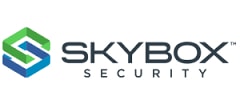|
~Those using an attack surface visibility tool are significantly more likely to be satisfied with ability to analyze and prioritize~
Among the key findings: organizations are least automated (and least confident) in areas related to (a) collecting data about virtual and cloud–based systems and applications and (b) analyzing and remediating firewall rules that violate policies and regulations. These are the areas, therefore, with the most room for improvement in the immediate future, especially considering that many organizations are quickly transitioning to hybrid IT networks and regulatory requirements worldwide are increasing and becoming more strict. For example, while a near-perfect 92 percent of organizations use automated tools to detect vulnerabilities on hosts and servers, only 54 percent use automated tools to assess security controls on cloud–based systems and applications. The data points to other areas that need improvement, particularly for tasks involving remediation and provisioning. Although most organizations automate the process of pushing patches (between 74 and 81 percent), approximately half of the organizations (between 44 and 53 percent) have primarily or completely manual processes for most other areas. This includes: remediating misconfigurations on servers and network devices, systems and data access rules, and firewall rules that violate policies; provisioning firewalls, firewall rules and security. “The lack of an automated approach among so many organizations is alarming, especially when you consider that the industry is experiencing a severe shortage of security professionals,” said Skybox Director of Product Marketing Kevin Flynn. “And in the very near future, regulations will become more burdensome — and the consequences of not meeting those regulations more painful — so organizations should really be investigating tools that automate configuration, vulnerability and policy management.” Additional key findings:
About Skybox Security Skybox arms security leaders with a powerful set of integrated security solutions that give unprecedented visibility of the attack surface and key Indicators of Exposure (IOEs), such as exploitable attack vectors, hot spots of vulnerabilities, network security misconfigurations and risky firewall access rules. By extracting actionable intelligence from data using modeling, simulation and analytics, Skybox gives leaders the insight needed to quickly make decisions about how to best address threat exposures that put their organization at risk, increasing operational efficiency by as much as 90 percent. Our award-winning solutions are used by the world’s most security-conscious enterprises and government agencies for vulnerability management, threat intelligence management and security policy management, including Forbes Global 2000 enterprises. |

 New Delhi, October 25, 2016–
New Delhi, October 25, 2016–